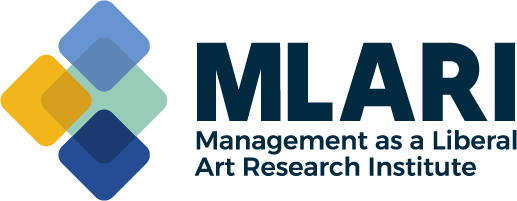The Value of Interdisciplinary Thinking
PUBLISHED:
Welcome to the fourth blog post in this series. We’ve covered debates about the nature of knowledge, the concept of knowledge work and its evolution, and the wise use of knowledge and information. In this issue, I’d like to focus on the importance of transdisciplinary knowledge in critical thinking in all organizations.
We don’t have to be experts in a given field to use the skill sets and expertise that different disciplines can teach us. The field of history is an excellent example of how to use interdisciplinary thinking in exercising judgment.
For instance, what can the discipline of history teach managers and practitioners who make decisions in today’s organizations?
Different kinds of evidence: Historians are trained to understand the importance of evidence. First-hand sources are crucial to gaining a sense of what happened from multiple perspectives. These are accounts from people who witnessed events as they happened. Secondary sources are filtered through someone’s viewpoint. John Dean, an American attorney, served as Richard Nixon’s White House counsel during the Watergate scandal. Dean played a significant role in the coverup of the administration’s attempts to illegally obtain information from the Democratic National Committee during Nixon’s 1972 re-election campaign. Dean’s statements and testimony regarding events during the Nixon administration would be considered primary evidence. Journalist Garrett Graff’s 2022 book, Watergate: A New History, is a secondary source, analyzing the historical event using multiple sources, including public records. While Dean’s statements reveal his own perspective of events, the Graff work presents his analysis of multiple sources, including many primary sources. We need both the evidence of people who were “in the room” and those who are more removed. Lincoln famously assembled a cabinet that was a “team of rivals,” consisting of people who would have reason to disagree with him or challenge his decisions. Drucker discussed the importance of dissenting opinions/perspectives in decision making. As leaders, we need to watch for our tendency to listen to or consider sources that seem comfortable and familiar to us.
Understanding bias: When I taught history, students often resorted to the argument that all sources were biased, and therefore unreliable. I told them that if their life project was a search for an unbiased source, they would be unfulfilled. Human beings are, by nature, filled with implicit and other biases. The sooner we realize this, the better. As historians, we deal with this all the time as part of the context of our sources. A slaveholder during the debates on the Constitution would obviously have favored maintaining slaveholding states. The fact that we find this position abhorrent today is irrelevant; the debates regarding the validity of slavery were a real part of American history, and economic interests played a pivotal role in arguments for maintaining the system of bondage. Today, a major oil and gas landholder will obviously be “biased” against legislation that is unfavorable to her position. Those who favor more affordable housing will be “biased” towards legislation that forces rent controls, low-income housing construction, and accommodations for unhoused people. The problem is with the word “bias” and its negative connotations. Advocates for a particular position will advance arguments that give more weight to their viewpoint. They may be paid to do so, or they may do so as part of an organizational mission and vision. The more interesting questions lie in our unrecognized biases. Every individual needs to be held accountable for considering their own implicit biases. Are there people that I, for some reason, view in a negative light? Is it because of their economic status? Political leanings? Speech patterns? Appearance? The more we engage with interdisciplinary thinking, the more we are forced to confront our own state of knowledge, its basis on assumptions, and our blind spots that result from a lack of exposure to different modes of analysis.
Importance of context: Decisions and judgments are not made in a vacuum. Local, regional, and international events can impact even small decisions. Rosa Parks did not sit in the white section of a public bus because she was old and tired. She was a political activist capitalizing on a change signaled by a Supreme Court decision (Brown vs. Board of Education). In this context, a single individual’s decision was driven by a shift in attitudes about race in the United States that had been building since the early 1900s and exploded after the end of the Second World War. Sometimes, the timing of a decision involves understanding the temperature of society, not just the room. If you have a major change to implement in your organization, is now really the time to do it (even if you want to do it now, or the budget calendar pushes you to do it, or whatever other internal force is driving that decision)? Look at some of the corporate blunders that involved a failure to read the room (Bud Light’s transgender promotional campaign for example). The “culture wars” in the United States over what is acceptable in popular culture and advertising has created a mine field for marketers seeking to cultivate customers in various demographics.
Importance of ‘why’: We spend a lot of time on “what” decisions (what to do, what to buy, etc.). But do we think about why? I’ve always felt that it was my obligation as a person in any leadership position to explain the why behind anything: why are we taking on a new activity, spending money, bringing on people, applying for a grant, cutting a program, instituting a policy, etc. We should think a LOT about why more than what, and we should spend a LOT more of our time discussing why with people we work with. History gives us examples again. Why were George W. Bush and so many Americans convinced that Iraq would welcome a democratic program of nation building in that country? Why are we surprised when some decisions we make end up going in a completely different direction than expected?
Open mindedness: Historians don’t just deal with organizing facts. They deal with making sense of those facts. And, sometimes, that involves new interpretations of old facts. Some really innovative and fresh historical scholarship has involved looking at old material with a new view. Historians have taken revered figures, such as Martin Luther King, Jr., and depicted them as real people with faults and character flaws. Similarly, they have rehabilitated people that have been depicted as shallow villains, such as Benedict Arnold, as more complicated actors. While such nuanced views of people might require effort to understand, it reflects the reality of our world, which is not black and white with easy answers to complex problems. Thinking of new ways of looking at “what we all know” is an important skill that Drucker excelled at.
We face incredible challenges with respect to exercising judgment and wisdom. It is too easy to fall into habits ingrained by our disciplines. If we are quantitatively inclined, we tend to rely on data to make decisions for us. But this discounts the importance of phronesis – the marriage of wisdom to action. We all have biases related to experience, culture, upbringing, and a multitude of other factors. Are we fuzzy or techie, and do we appreciate both? Do we lack experience, or have too much of the wrong kind of experience? Drucker’s admonition that management as a liberal art involves self-knowledge and wisdom indicates that we need to constantly think about challenging ourselves as decision makers.
Next time, in our final installment of this issue, we bring knowledge, wisdom, and technology together: How can human wisdom and AI collaborate to redefine knowledge, knowledge work, and a knowledge society?
Graff, G.M. (2022). Watergate: A new history. Simon & Schuster.
Hartley, S. (2017). The fuzzy and the techie: Why the liberal arts will rule the digital world. Houghton Mifflin.





